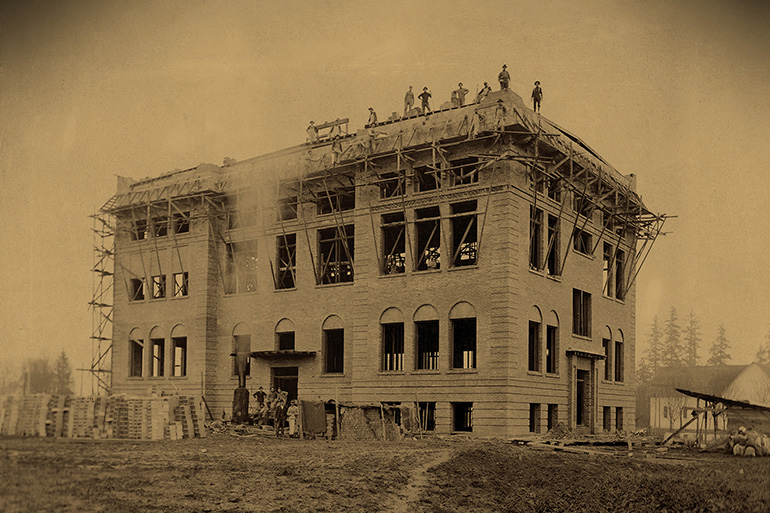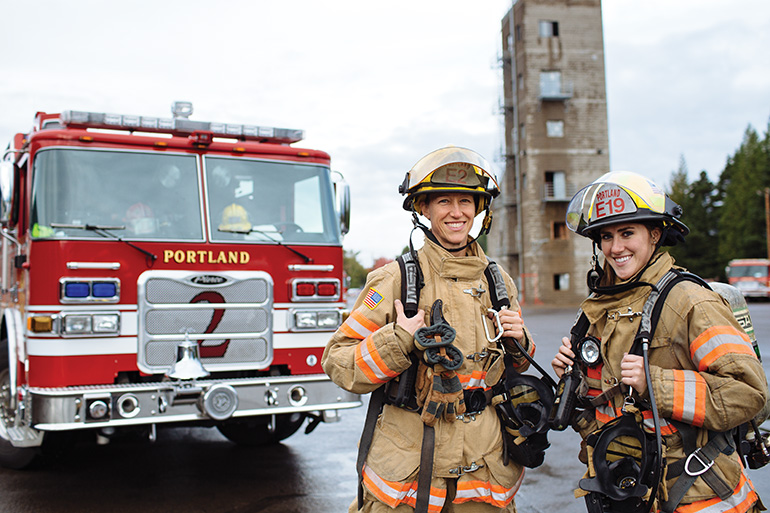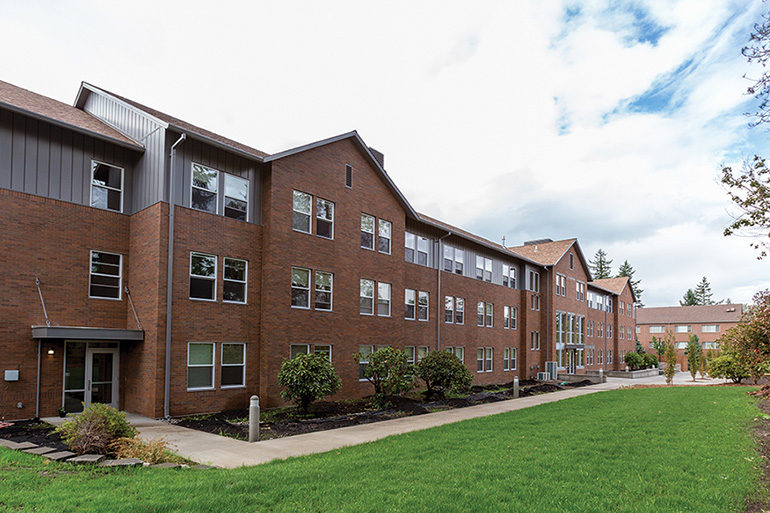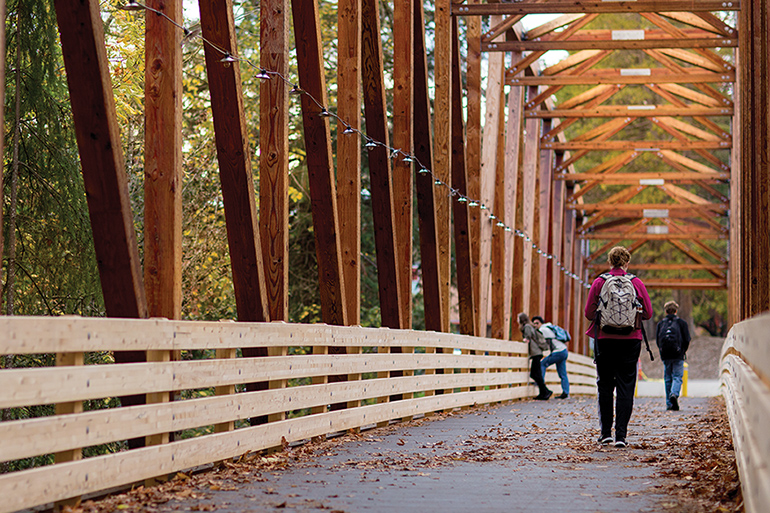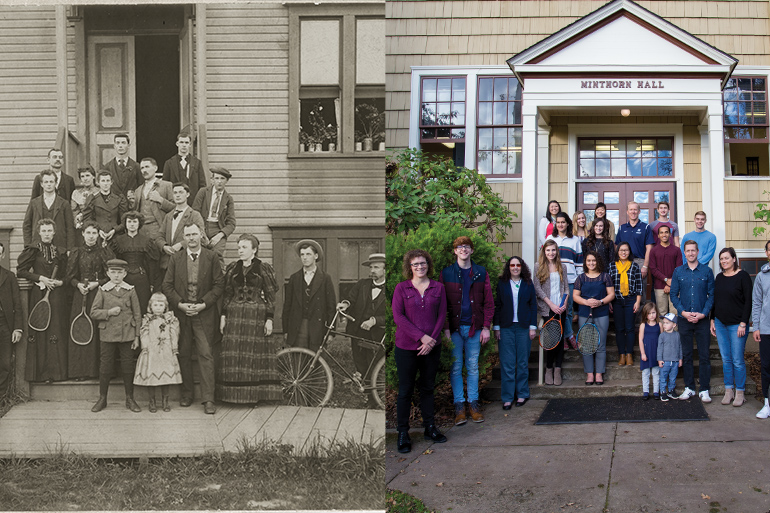The Harmony Tree: A Story of Healing and Community
Bruin Notes
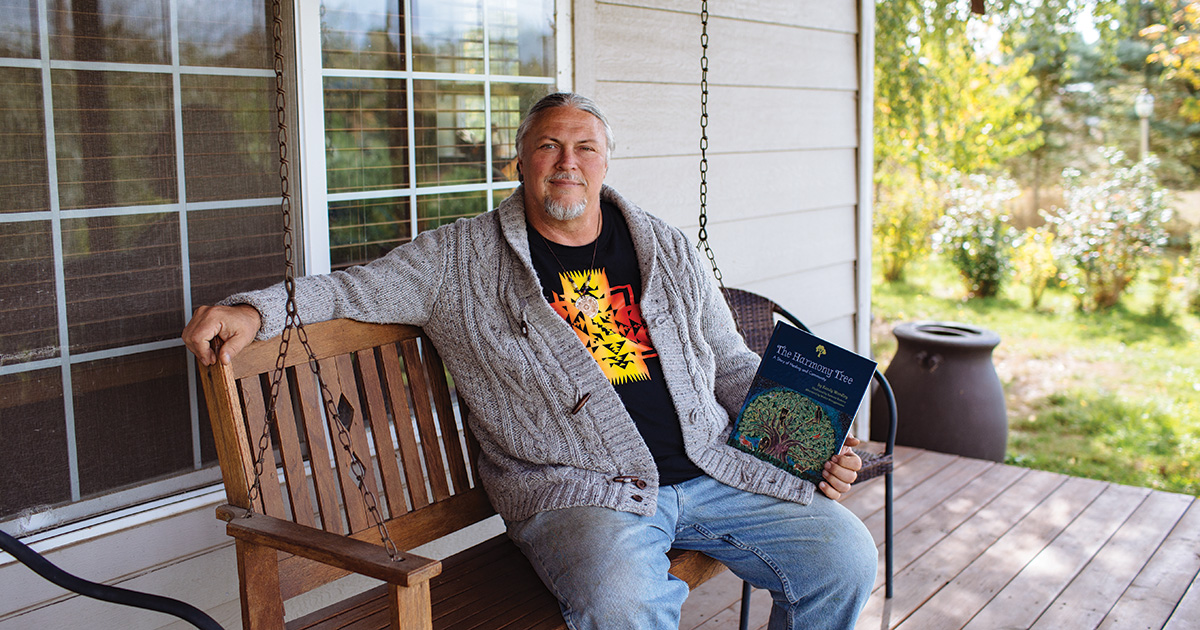
Seminary professor Randy Woodley hopes his new children’s book will influence people of all ages
Life in the great forest was happy. The ancient trees protected the younger ones from growing too fast and provided plenty of food and shelter for many creatures. Everyone – from the ruffed grouse and black bear, to the white-tailed deer and milk snake – lived in balance and harmony.
But one day, without warning, everything changed.
Thoughtfully crafted with a compelling story, challenging lessons and beautiful illustrations, the opening pages of professor Randy Woodley’s first children’s book, The Harmony Tree, introduces the reader to an ecologically idyllic forest teeming with life and spirit.
But a great tragedy soon befalls the trees, and only one ancient oak survives. Houses begin to emerge near the old oak, along with new, transplanted trees. At first the new trees ridicule the native oak tree because she is different, but over time they realize how important her wisdom and knowledge of the land are to their own survival.
According to Woodley, a legal descendant of Keetoowah Cherokee Indians and distinguished professor of faith and culture at George Fox Evangelical Seminary, The Harmony Tree has several layers, but it is primarily an allegory for the relationship between ethnically white and indigenous people groups. He hopes the book can be a racial bridge between the two.
“I wrote it so that the newcomers – anybody who has come [to America] in the last 520-something years – would begin to see the value of understanding and conciliation with Native people,” he says.
The book also celebrates a marriage of indigenous perspectives and the Christian faith, which challenges certain misconceptions white evangelicals may have developed. For instance, Woodley suggests that Western Christianity has adopted a dualistic theology supposing the physical world is less than the spiritual world, or things that have to do with the land aren’t as important as people.
“That’s a very tilted way of looking at the world,” he says. “A better way would be to say everything God created is spiritual, and the physical realm, the material world, the earth, the creation, the ecosystems – all of those things are important to God.” Woodley originally discussed these issues and more in his previous book, Shalom and the Community of Creation. But when he didn’t feel some readers were catching his vision, he turned to writing The Harmony Tree allegory. A former pastor, Woodley recalls congregations always remembered the children’s story told during church services better than any of his sermons. “There’s something about story we relate to. We find ourselves in the story,” he says.
Similarly, Woodley hopes The Harmony Tree will be remembered and spark a desire to learn more, in both children and adults. He even offers some advice to parents about how to use the book: “One of the best things you can do is take your kids out to a wonderful forest somewhere, and you let them see the birds and hopefully maybe even see some animals. And then you take them somewhere that’s been clear-cut, and you ask, ‘What’s the difference?’ And they know there’s a difference. They know something’s wrong. They’ll feel it in their soul. Once they get the picture, you can begin to teach into that.”
Bruin Notes
- Three Inducted Into Alumni Hall of Fame
- Engineering Innovation Center Unveiled
- A First: Women’s Golf Ranked No. 1
- George Fox University Sports Hall of Fame
- In Print
- George Fox Ranked Among ‘America’s Best Colleges’ for 29th Year
- Record Enrollment Tops 4,000
- A New Name: Portland Seminary
- University to Add Swim Team in 2018
- Mayor Declares ‘Year of George Fox University’




